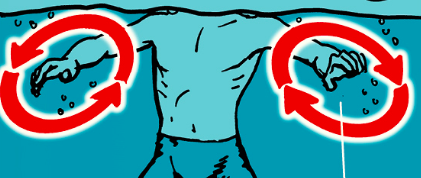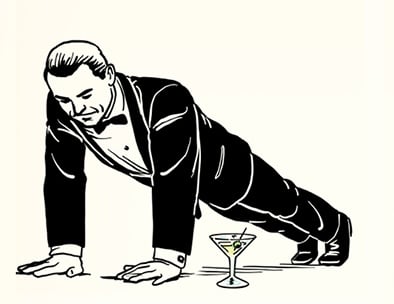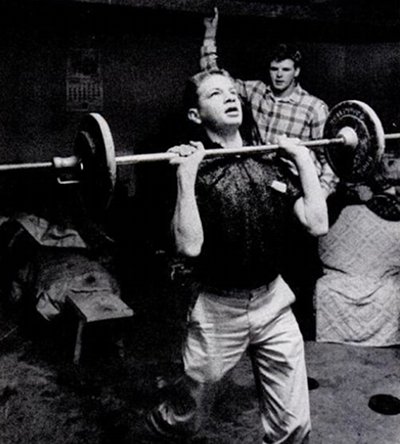
When you think of water workouts, your mind probably goes to lap swimming, water aerobics, or maybe some high-octane Navy SEAL pool drill. What probably doesn’t come to mind is treading water — something you learned in swim class as a survival skill and haven’t thought much about since.
But treading water isn’t just for passing a Red Cross test or keeping yourself afloat while waiting for a lifeguard. With a little intentionality, it can be turned into a surprisingly effective — and satisfyingly challenging — full-body workout.
Why Treading Water Is Good Exercise in General
Let’s first look at what makes treading water beneficial even before you try to level it up:
- Full-body engagement: An efficient tread uses your arms, legs, and core in coordination. The flutter kick, scissor kick, or eggbeater motion all activate your lower body, while your arms sweep and stabilize.
- Cardiovascular and muscular endurance: Staying afloat taxes both your aerobic capacity and your muscular endurance, especially the longer you do it.
- Low impact: It’s easy on your joints. If you’re dealing with nagging injuries or trying to stay active during recovery, it’s a solid option.
- Real-world utility: Treading water builds the kind of practical fitness that could one day keep you alive — or help you save someone else.
- Mental toughness: There’s a primal discomfort in the feeling of not being able to rest — of having no edge to lean on, no ground to stand. Learning to push through that discomfort builds your poise under pressure.
How to Make Treading Water a Legit Workout
Most people tread water inefficiently and lazily — just enough to keep their nose above the surface. But that doesn’t activate the full potential of this exercise. Mixing in these elements will:
1. Add Time-Based Intervals
Instead of aimlessly bobbing around, structure your session like you would a gym workout:
- Warm up: 3 minutes easy treading
- Main set: 5 rounds of 1 minute hard treading, 30 seconds easy
- Cool down: 2 minutes easy
“Hard treading” means using faster, more forceful movements — like exaggerated eggbeater kicks and aggressive arm sweeps — to keep your upper chest and even your shoulders above the waterline.
2. Go Hands-Free
Cross your arms over your chest or raise them overhead while kicking. This forces your legs and core to work overtime and completely removes the assistance of your arms. Try to hold for 20–30 seconds, then recover with normal treading.
3. Hold a Weight
Grab a 5-10 lb object like a dumbbell or brick and hold it at your chest or overhead while treading. This instantly boosts the difficulty and mimics classic lifeguard or military pool drills.
Warning: If you’re not a strong swimmer, make sure a capable buddy or lifeguard is watching while you do this. It’s no joke.
4. Perform Water-Based “Strength” Moves
Mix in controlled movements to target different muscle groups:
- Water pushdowns: Push the water down as hard and fast as you can with straight arms.
- Flutter kick sprints: Keep your legs straight and kick rapidly without using your hands.
- Bicycle kicks: Mimic riding a bike while staying upright — harder than it sounds.
5. Set a Distance Marker
Pick a pool lane and tread from one side to the other without swimming — just vertical movement. This forces forward propulsion through awkward, inefficient movement, taxing your stabilizers and coordination.
Sample 20-Minute Treading Water Workout
Here’s a simple beginner-to-intermediate routine:
| Time | Activity |
|---|---|
| 0:00–3:00 | Warm-up (easy treading) |
| 3:00–4:00 | Hard treading |
| 4:00–4:30 | Rest (light treading) |
| 4:30–5:30 | Hands-free treading |
| 5:30–6:00 | Rest |
| 6:00–7:00 | Treading while holding weight |
| 7:00–7:30 | Rest |
| 7:30–10:00 | Intervals: 30s sprint treading / 30s rest x 3 |
| 10:00–12:00 | Pushdowns and flutter kicks |
| 12:00–15:00 | Distance tread (cross pool vertically 2–3 times) |
| 15:00–17:00 | Hands-free or overhead hold challenge |
| 17:00–20:00 | Cool down (easy treading) |
Final Tips
- Stay upright: The workout is in the vertical position. If you’re angled back like you’re floating in a La-Z-Boy, you’re doing it wrong.
- Don’t touch the bottom: Treading only works if you’re off the ground. Deep end only.
- Work up gradually: You’ll be shocked at how tiring this gets. Ease in and build your capacity over time.
- Use good form: Lazy flapping wastes energy. Focus on strong, intentional movements.
There’s something satisfyingly fundamental about treading water. You don’t need equipment, music, or a squat rack. It’s just you versus gravity. As opposed to other workouts, where the fitness being built seems several steps away from what might be called upon in the real world, you can viscerally feel it building your survival capacity. So tread away — you’re getting harder to kill!







![The Santa Claus Workout [VIDEO]](https://content.artofmanliness.com/uploads/2013/12/reins.png)